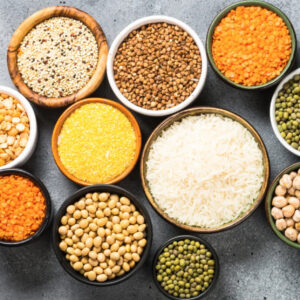
STANTON, ND — Darian Kath is helping Knife River Indian Villages get back to its roots.
The national historic site’s acting interpretive and cultural resource manager has been expanding the site’s gardens with an eye to history of the Mandan, Hidatsa and Arikara people. Kath cultivated corn, beans, squash, tobacco and sunflowers this year.
Now he’s sharing the harvest with the Mandan, Hidatsa and Arikara Nation, the Standing Rock Sioux Tribe and other people for food, ceremony and starting community gardens around the state, The Bismarck Tribune reported.
“My ultimate goal with the gardening and everything is to have like a food sovereignty food bank for the tribes,” Kath said.
He started growing plants indoors in April. The garden plots faced challenges including ground squirrels raiding the corn and sunflowers, and a mosaic virus that struck the beans. An early frost this month hit the gardens hard, but sunflowers and a stand of tobacco plants survived. Harvested tobacco is hanging in the site’s earth lodge to dry.
Kath might “dial back” the garden next year, potentially abandoning one plot and expanding the other. As the coronavirus pandemic emerged in North Dakota last spring, he found gardening a good diversion. He’s enjoyed early morning walks in the quiet garden plots, where hummingbirds and bumblebees visit.
“Gardening is therapeutic,” he said. “It’s health and wellness.”
Site Superintendent Alisha Deegan said visitors comment most often on the gardens and earth lodge. The site also offers trails and cross-country skiing. Ground depressions of past earth lodges also are visible on the land.
“There’s a lot. We have the natural and cultural resources,” she said.
Kath grew three varieties of tobacco, including two traditional Native types and one commonly found on Virginia plantations of the time the Knife River villages were occupied.
The site had last grown tobacco circa 2008. When shrubs out front of the site’s visitor centre were removed, Kath thought it the perfect spot, front and centre, for a tobacco garden.
He gives the tobacco as gifts to tribal elders, who mainly use it for ceremonial purposes. He recently gave some to Keith Bear, a renowned Mandan-Hidatsa flutist.
Bear plans to take the tobacco with him as a gift when he and a brother visit medicine people in Montana. Tobacco is a sacrament for many Native people, he said.
“It’s not where you just sit down and have a cigarette,” Bear said. “This is where you offer your prayers.”
Sometimes tobacco is mixed with clippings of red willow, a mixture called chinshasha, he said.
Tobacco is loaded into pipes in seven pinches, representing north, south, east, west, above and below, “but the last pinch comes from your heart, because no matter where you stand in the universe, you are the centre of the universe,” Bear said.
“Prayer is so powerful,” he said. “I don’t care what culture you go to, prayer is the most powerful thing.”
Coming from the villages, the tobacco has historic and spiritual significance, he said. He regularly offers tobacco in prayer.
Kath said the tobacco will hang in the earth lodge until it’s fully dry. Several plants survived the frost. A few new blossoms even turned up recently.
“It’s kind of a special thing,” he said.
Kath harvested corn ranging in colour from dark red to “pink lemonade” to a rare “eagle-spot” variant.
He hand-pollinated the corn to encourage diversity in the garden, and studied gardener Buffalo Bird Woman’s 1917 account of Hidatsa agriculture.
“Luckily we still have that knowledge today” after smallpox epidemics devastated the tribes centuries ago, he said.
Kath plans to take a box of corn, squash and seed corn to New Town on the Fort Berthold Reservation. He’s also talked with Standing Rock tribal members about gardening projects.
Knife River’s garden included colorful Painted Mountain corn developed by Montana corn breeder Dave Christensen and traced back to the villages.
“That corn has most of its ancestry from Knife River,” Christensen said.
He’s been breeding the corn for 48 years, using seeds from a national seed bank that preserved Native corn from Bismarck seed magnate Oscar Will, who developed and sold seed varieties.
Painted Mountain corn is “very versatile” and stress-hardy, according to Christensen. It also matures and dries quickly. The corn is available through catalogues.
“It’s always been fun to grow that one because you never know what you’re going to get when you unwrap a cob,” Kath said.
Christensen visited the Knife River Indian Villages about 20 years ago on a spiritual corn trip, when he met with Native and local people to learn about the corn’s history.
He’s shared the corn with reservations that have lost their original seeds. Painted Mountain is mainly a flour corn, but it can be eaten fresh off the cob like sweet corn, but it’s not sugary, he said.
He’s provided the corn all over the world for food crop — even North Korea.
“It will grow where nothing else will grow,” he said.











